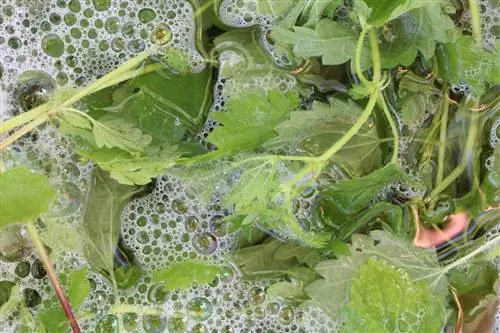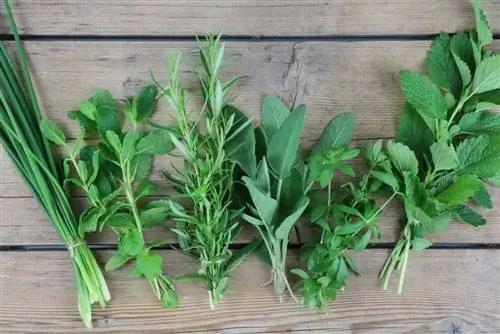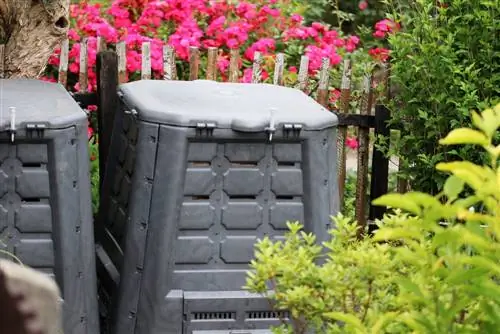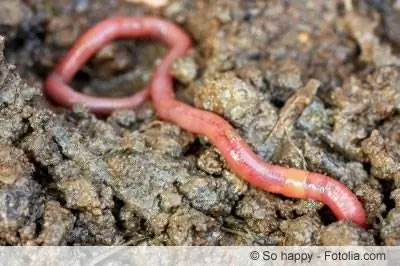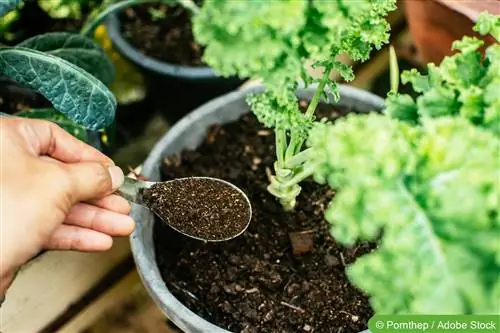- Author admin [email protected].
- Public 2023-12-17 03:39.
- Last modified 2025-06-01 06:48.
Fertilizers with the label “organically flawless” are of course available to buy. However, for many hobby gardeners it is more satisfying to produce the organic fertilizer they need themselves. The ingredients are known, as they were put together ourselves and the required amount can often be easily prepared using simple means.
There are a whole range of natural fertilizers that can be used to safely fertilize almost all plants, be they ornamental or useful plants. However, biological fertilizers can also contain pollutants that can cause damage if used too intensively.
Biofertilizer from compost
The best-known variant is compost. This ideal means of recycling organic kitchen waste also offers the best breeding ground for all plants. The production is a bit time-consuming, but still very simple. Therefore, a compost heap should be in every garden that has a corner for it. A compost bin fits even in the smallest garden, with more space you can accommodate an open composter, which a skilled craftsman can even build himself out of wooden pallets. It's not just all kitchen waste that goes into it, but rather a well-thought-out mixture that ensures he alth and growth in the garden in the years to come.
- Garden waste can go completely into the composter, apart from weeds whose seeds can germinate in the compost and plants with contagious diseases.
- When it comes to kitchen waste, almost any type of organic matter is suitable, as long as it is raw. Meat and cooked food have no place in the compost.
The finer the waste is shredded, the easier it is to compost. If the compost has turned into humus after a while, it can be safely used for any type of plant. Apart from the initial purchase of the composter, the cost factor is zero.
Produce green manure
Another popular organic and harmless fertilization method is winter foundation. It also takes some time, but since it is used in the cold months, it requires little work and only costs as much as the seeds required. The simplest method here is to sow fast-growing plants in the areas of the garden that need to be fertilized and to cut them before they bloom or before seeds develop. The decision here depends on the type of plant, as many flowering green manure plants attract bees with their flowers. The green waste is simply left lying around. It then rots in place. While the plant roots loosen the soil and improve the soil structure in many ways, the mown acts like a layer of mulch. As plants rot, the soil is enriched with nutrients.
The mulch is incorporated into the soil at the beginning of the new planting season at the latest, although woody parts of the plant are better chopped into small pieces and sent to the compost. Well-known and uncomplicated plants for green fertilization are bee friend (Phacelia), yellow lupine (Lupinus), winter rapeseed (Brassica napus), buckwheat (Fagopyrum), sunflowers (Helianthus), marigold (Tagetes), red clover and crimson clover (Trifolium)., marigold (Calendula) and wild mallow (Malva).
Plant manure as organic fertilizer
A very efficient, nitrogen-rich natural fertilizer can be produced using nettles, which can be easily picked from fields and forests for free. The production is very simple: first, the required amount of nettle is cut off a piece above the ground. In this way, contamination of the manure by animal droppings is largely avoided and the roots remain unharmed so that the nettles can sprout again. The nettles are now cut into small pieces and placed in a bucket or an old rain barrel (depending on the amount of nettle fertilizer required) and poured over with enough (rain) water so that they are completely covered. The container is then covered with a wooden or wire mesh if possible and should be left alone for about two weeks. Water can be refilled from time to time. After this time, the container should be closed with a tight lid. Now the nettle manure can be used in a dilution of 1:10 for any type of plant. The amount depends on the size of the plant. A fully grown tomato plant needs about half a liter of manure poured into the soil around it.
The frequency of fertilization depends on the growth phase of the plant and is calculated like conventional fertilizer. You only need to be careful with leaf lettuce, because the manure develops a strong smell, which doesn't necessarily give the lettuce a pleasant aroma. The same applies to use on houseplants. Incidentally, the manure can be used in the early stages as a spray against aphids and regular watering of the affected plant with the manure should also reduce the aphid infestation. The clear disadvantage of this method is the smell. When the lid is open, the putrid aroma covers the entire garden and even extends to the neighboring terrace. Manure from other plants can also be prepared in the same way. Field horsetail (Equisetum arvense), groundweed (Aegopodium podagraria), comfrey (Symphytum), dandelion (Taraxacum sect. Ruderalia) and chamomile (Matricaria chamomilla), but also garlic and onions are suitable. Only a few plants don't like manure: onions and garlic as well as carrots and peas.
Make your own small organic fertilizers
A number of uncomplicated fertilizers are already in the kitchen and can be used without preparation:
- Coffee grounds: Plants that love acidic soil, such as roses, tomatoes, azaleas and blueberries, can be fertilized with coffee grounds. The mixture is sprinkled around the plant before watering.
- Banana peels: Very finely chopped banana peels raked into the soil around rose plants. As they rot, they release potassium, magnesium and other minerals that ensure magnificent flowers.
- Eggshells: Clean, crushed eggshells can be added to potting soil or worked into the soil around tomato and pepper plants. Cooking water from boiled eggs can also be used for watering.
- Seaweed and algae: Washed seaweed is an all-round fertilizer for many plants. It can be used without any problems when finely chopped and incorporated into the soil or added to manure and diluted. It contains nitrogen, phosphorus, potassium and various trace elements. Algae fertilizer is also available to buy as ready-made organic fertilizer or in dried form in Asian stores.
- Molasses: When diluted 1-2 tablespoons of molasses in 3.5 liters of water, molasses can, among other things, improve soil quality as it promotes the growth of certain microbes that can use the sugar it contains as food. To attract bees, the sugar concentration is too low when diluted accordingly. Vinasse, a waste product from the processing of molasses into ethanol, is used for large-scale agricultural needs.
- Panchagavyam: An ancient Indian recipe made from the ingredients cow urine, cow dung, cow milk, coconut, bananas and unrefined sugar is used in its country of origin as a fertilizer and natural pesticide. It has traditionally been used by organic farmers in India with very good success. The effort required to produce it is relatively low, but sourcing the ingredients is a little more complicated in this country.
What you should know about organic fertilizer in brief
- Biofertilizer is an organic compound fertilizer with a long-term effect.
- Biofertilizer can be based on fungal biomass, for example. This is purely plant-based and contains no animal body parts.
- There are also so-called organic long-term fertilizers on a microbial basis.
- Thirdly, there is Patentkali, which is a mixed fertilizer made from soft earth rock phosphate and Patentkali.
- Fourthly, there is lime fertilizer, a mineral fertilizer that primarily contains the main nutrient calcium.
- And finally there is the so-called boron fertilizer, whereby boron is an important trace element that strengthens the cell walls.
Some of these organic fertilizers are certified for organic farming. Organic fertilizers also include liquid manure, although its application results in a very strong smell. A somewhat macabre - and also strong-smelling - organic fertilizer is that some organic farmers in certain regions make their soil fertile with poultry waste. This is a mixture of chicken droppings, bones and feathers. This fertilizer mixture comes from the Netherlands.
The nutrient release of organic fertilizers is usually slow and even, which means that the cell tissue becomes firm and you get a high-yield and very tasty harvest.

